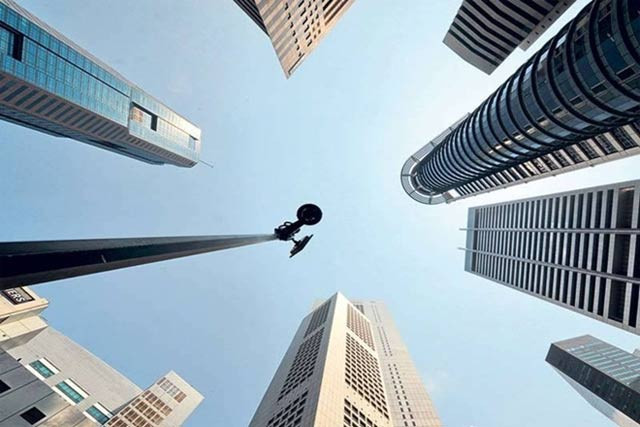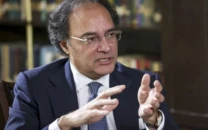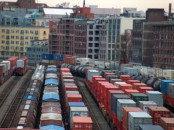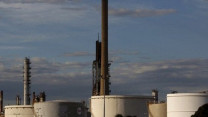Government slashes project spending by Rs50b
Govt releases Rs110.4b in first quarter, which is mere 13.8% of annual allocation

Govt releases Rs110.4b in first quarter, which is mere 13.8% of annual allocation. PHOTO: REUTERS
The government released Rs110.4 billion for different development projects under the Public Sector Development Programme (PSDP) 2016-17 from July through September, according to the Ministry of Planning, Development and Reform.
The releases are a mere 13.8% of the annual allocation of Rs800 billion for the PSDP.
PM Nawaz inaugurates five CPEC projects in Gwadar
The less-than-sanctioned release of funds was contrary to the directives of NEC that authorised 20% of development budget spending in the first quarter.
Prime Minister Nawaz Sharif chairs the NEC meeting while chief ministers of all provinces and special areas are its members.
The amount of Rs110.4 billion was 26.6% less than the funds released in the same period of previous fiscal year when the Ministry of Planning sanctioned Rs150.6 billion.
“The planning ministry regularly monitors spending patterns to make sure that every penny of sacred resources is fully utilised. However, off-take remains slow in the first quarter,” commented Planning Secretary Yousaf Naseem Khokhar.

Reasons for slowdown
The predominant role of the finance ministry coupled with capacity constraints faced by executing agencies were said to be among the reasons for the slowdown in release of funds, according to officials of the planning ministry.
The office memorandum of the finance ministry restricts current and development expenditures to 20% each in the first and second quarters and 30% each in the third and fourth quarters.
The development funds did not include foreign aid for development spending. The foreign aid stood less than Rs10 billion in July-August 2016. Data for September was not available. It is not for the first time that the federal government has pushed development spending to the backburner due to uncontrolled current expenditures. In the last fiscal year also, it cut PSDP spending by Rs107 billion, according to finance ministry documents.
Metro bus project: PM approves controversial subsidy sharing formula
Where the money goes
More than one-third of the Rs110.4 billion released in the first quarter would not be spent on development activities, although the government showed them as part of the development budget.
Of the amount, Rs41.2 billion was given for the rehabilitation of temporarily displaced persons (TDP) affected by the on-going Operation Zarb-e-Azb.
The planning ministry did not treat it as development spending, although an allocation of Rs100 billion for the TDPs was part of the annual Rs800-billion PSDP. After excluding funds for the TDPs, the money given for development spending in the first quarter was just Rs69.1 billion. This left very little for development activities and in many cases the money was only sufficient to pay salaries to staff of the projects, according to sources in the Ministry of Planning.
The government gave only Rs3.2 billion to the Ministry of Water and Power for water projects, which was 10% of the annual allocation. For power projects, a meagre Rs69.2 million was released against annual allocation of Rs130 billion.
According to the planning ministry, Rs2.7 billion was released for different projects of the Pakistan Atomic Energy Commission, which was less than one-tenth of its annual allocation of Rs27.7 billion.
The government released Rs18.2 billion for different projects of the National Highway Authority, which was also less than one-tenth of its annual budget of Rs188.8 billion.
For the construction of Burhan-Hakla motorway of the China-Pakistan Economic Corridor, Rs4.4 billion was released against annual allocation of Rs22 billion.
For the Thakot-Havelian project, Rs500 million was released against annual allocation of Rs16.5 billion. For the Lahore-Abdul Hakeem section, Rs6.8 billion was released against annual allocation of Rs34 billion.
However, the planning ministry gave 100% budget to the National Endowment Scholarships for Talent (NEST) project, which the ministry itself managed.
The government released Rs9.4 billion for the Pakistan Railways against total allocation of Rs41 billion and sanctioned Rs5.5 billion for the National Health Services, Regulation and Coordination Division.
Published in The Express Tribune, October 4th, 2016.
Like Business on Facebook, follow @TribuneBiz on Twitter to stay informed and join in the conversation.



















COMMENTS
Comments are moderated and generally will be posted if they are on-topic and not abusive.
For more information, please see our Comments FAQ